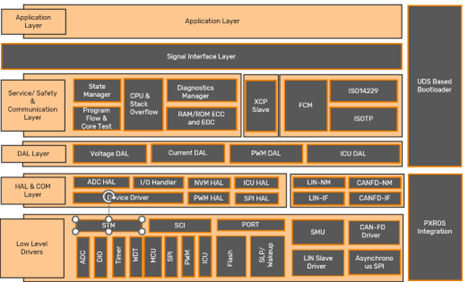Cybersecurity Risks and Preventive Measures for your EV Smart Charging System
Category : Embedded Blog
Electric vehicles (EVs) are becoming increasingly popular, and with their growth, the demand for charging infrastructure is also increasing. An EV needs a system which can quickly and effectively recharge the battery bank of the vehicle in a hassle free manner. The smart charging system is a new and emerging technology that enables electric vehicles to charge and communicate with the charging infrastructure.
This system uses transmission-based technology (with access to user’s information) that can pose security risks if not properly secured. This blog explores the cybersecurity measures that can be taken to protect the EV smart charging system.
To know more about automotive cybersecurity, check out our blog Why Cybersecurity Has Become Indispensable for Automotive Industry?
EV Smart Charging System: An Overview
The EV smart charging system is a technology that enables communication between the EV and the charging infrastructure. The primary objective of smart charging is to connect consumers and operators with charging outlets. Every time an EV is plugged in, the charging station transmits data (such as charging time, speed, etc.) to a centralised cloud-based management platform through Wi-Fi or Bluetooth.

Hence, through a single platform, website, or mobile application, charging operators can quickly and remotely control and limit energy use. Additional features and advantages are also included; For instance, EV users can now manage and pay for their charging sessions using a smartphone app from any location at any time, thereby, optimizing charging times and energy usage.
A combination of software and hardware is used to manage the charging process. Further it can also be connected to the internet, which makes it vulnerable to cyber-attacks.
Cybersecurity measures such as encryption, authentication, access control, firewall, IDS, regular software updates, and user education can be implemented to protect the system.
These measures can help prevent malware attacks, DoS attacks, MITM attacks, password attacks, and social engineering attacks. It is important for organizations that operate EV smart charging systems to take cybersecurity seriously and implement appropriate measures to protect the system.
Cybersecurity Risks for EV Smart Charging System
The EV smart charging system uses cloud-based technology which makes it vulnerable to cyber-attacks. The following are some of the cybersecurity risks associated with the EV smart charging system:
- Malware is a malicious software that is designed to damage, disrupt, or gain unauthorized access to a computer system. Malware can infect the EV smart charging system and cause it to malfunction.
- Denial of Service (DoS) Attack is an attack that is designed to disrupt the normal functioning of a computer system. This attack floods the system with traffic, making it difficult for legitimate users to access the system.
- Man-in-the-Middle (MITM) Attack is an attack where the attacker intercepts the communication between two parties. The attacker can eavesdrop on the communication or alter the data being transmitted.
- Password Attacks refer to situations where the attacker tries to guess or crack the password of a computer system. Once the password is compromised, the attacker can gain unauthorized access to the system.
- Social Engineering Attacks are another plausible type of attack where the attacker tricks the user into revealing sensitive information. This information can then be used to gain unauthorized access to the system.
Cybersecurity Measures for EV Smart Charging System
Even though threats and attacks tend to risk the EV Cybersecurity system, there are steps that can be taken to prevent malware attacks. The following are some of the cybersecurity measures that can be taken to protect the EV smart charging system:
- Encryption is the process of converting plain text into cipher text, which is unreadable without the key. Encryption can be used to protect sensitive data that is transmitted between the EV and the charging infrastructure.
- Authentication helps in verifying the identity of a user or a device. Authentication can be used to ensure that only authorized users or devices are allowed to access the EV smart charging system.
- Access Control is a method of controlling who can access the EV smart charging system. Access control can be used to ensure that only authorized users or devices are allowed to access the system.
- Firewall is a network security system that monitors and controls incoming and outgoing network traffic. A firewall can be used to protect the EV smart charging system from unauthorized access.
- Intrusion Detection System (IDS) is a system that monitors network traffic for signs of a cyber-attack. An IDS can be used to detect and respond to cyber-attacks on the EV smart charging system.
- Regular Software Updates can fix vulnerabilities in the system and improve its security. Regular updates can also ensure that the system is up to date with the latest security patches.
- User Education simply refers to educating users on cybersecurity risks and how to protect themselves from cyber-attacks. User education can help prevent social engineering attacks and password attacks.
Furthermore, it is important for organizations to continuously monitor the system for signs of cyber-attacks and to have a plan in place to respond to any security incidents. The plan should include procedures for identifying the type and scope of the attack, containing the attack, and recovering from the attack.
Hop onto this link to quickly check out the technology solutions and platforms for Electric Vehicle Development by Embitel.
Final Thoughts
The EV smart charging system is a promising technology that can help accelerate the adoption of electric vehicles. However, it is important to ensure that the system is properly secured against cyber-attacks. By implementing the cybersecurity measures discussed in this blog, organizations can help protect their EV smart charging systems from cyber-attacks and ensure that the system operates securely and reliably.





























